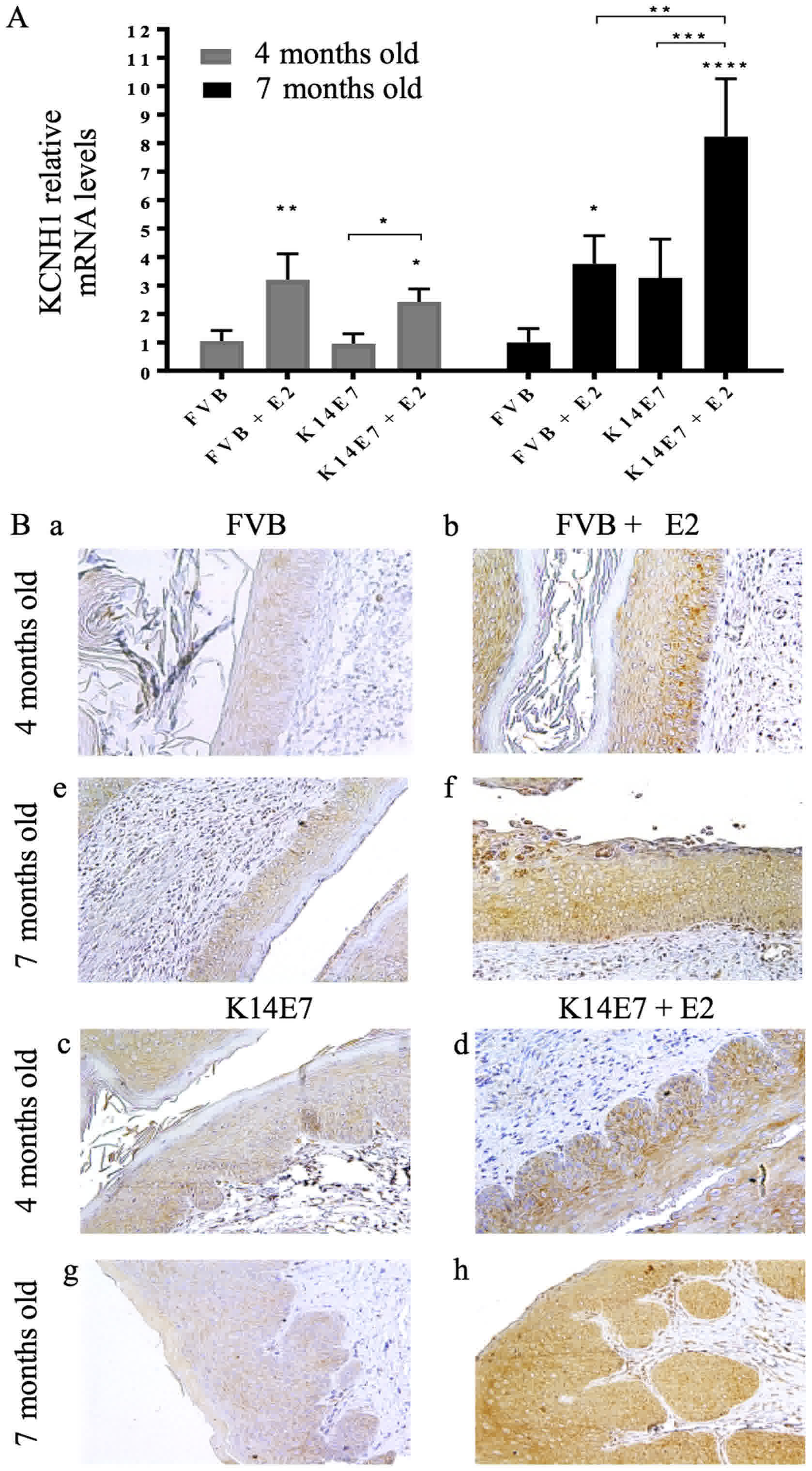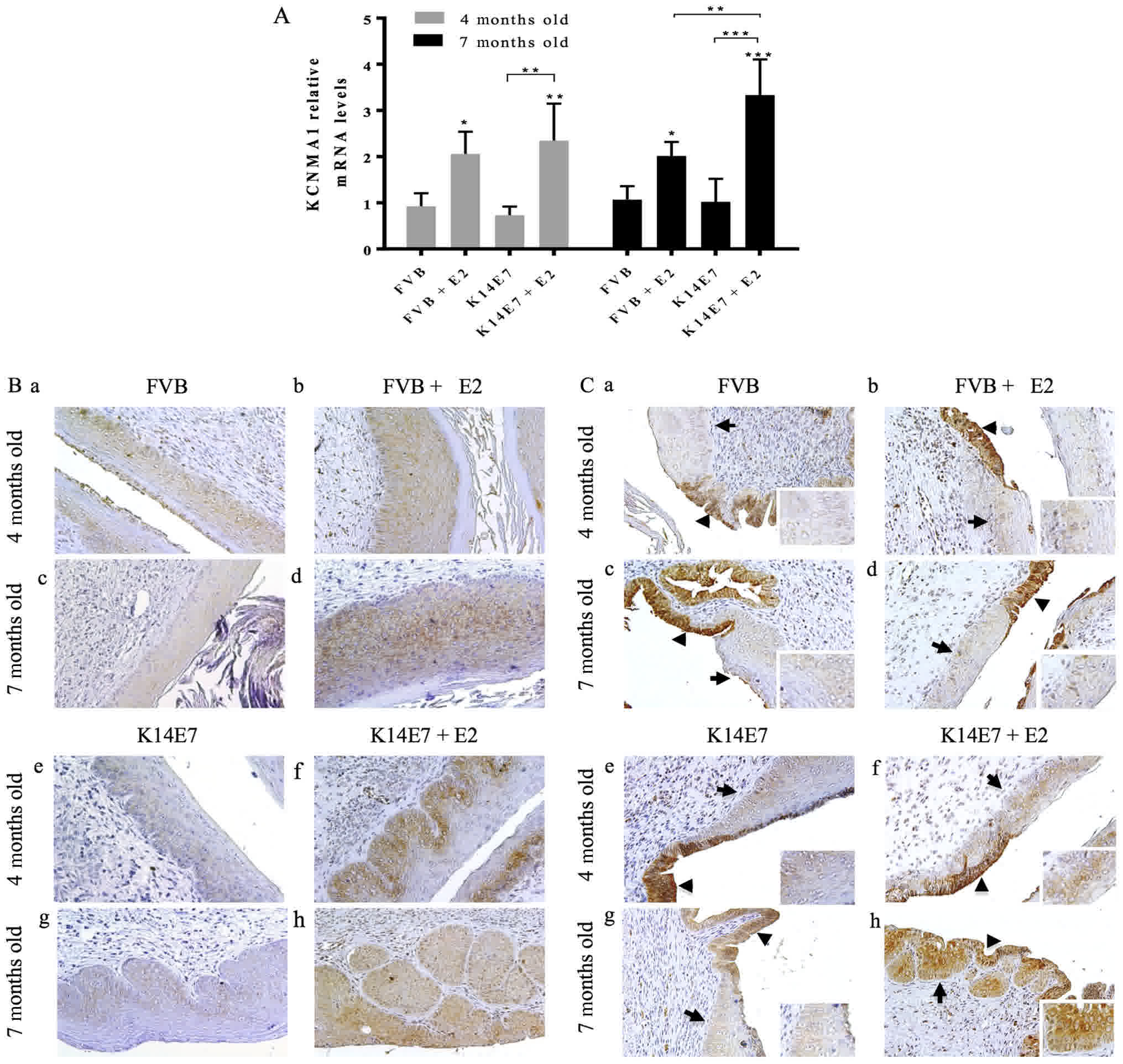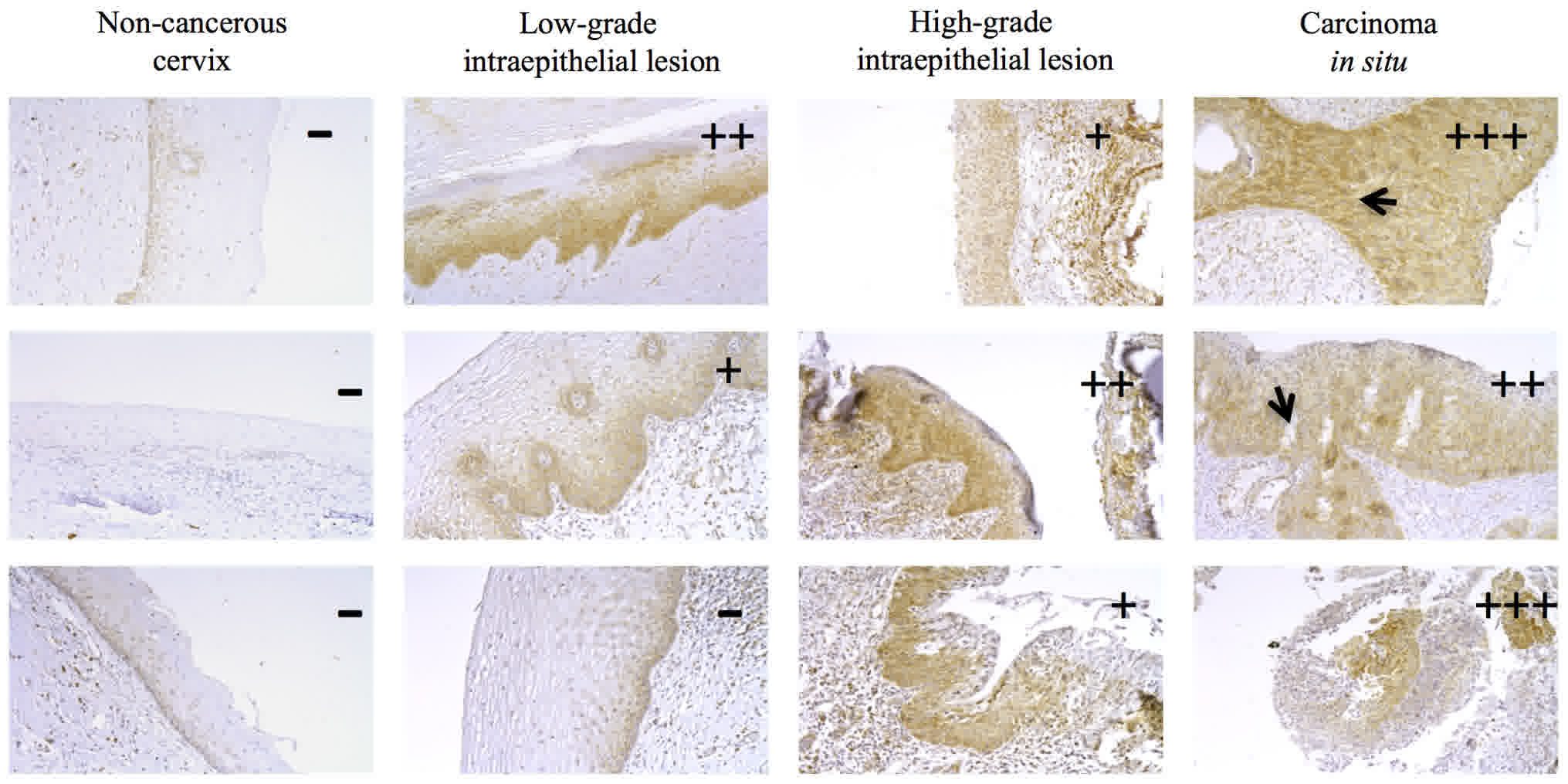|
1
|
Saslow D, Solomon D, Lawson HW, Killackey
M, Kulasingam SL, Cain J, Garcia FA, Moriarty AT, Waxman AG, Wilbur
DC, et al: American Cancer Society, American society for colposcopy
and cervical pathology and american society for clinical pathology
screening guidelines for the prevention and early detection of
cervical cancer. Am J Clin Pathol. 137:516–542. 2012. View Article : Google Scholar : PubMed/NCBI
|
|
2
|
Ferlay J, Soerjomataram I, Ervik M,
Dikshit R, Eser S, Mathers C, Rebelo M, Parkin DM, Forman D and
Bray F: GLOBOCAN 2012 v1.0. Cancer Incidence and Mortality
Worldwide: IARC CancerBase No. 11 [Internet]IARC. Lyon: 2013,
http://globocan.iarc.frAugust
2–2017
|
|
3
|
Au WW, Abdou-Salama S, Sierra-Torres CH
and Al-Hendy A: Environmental risk factors for prevention and
molecular intervention of cervical cancer. Int J Hyg Environ Healt.
210:671–678. 2007. View Article : Google Scholar
|
|
4
|
Chung SH, Franceschi S and Lambert PF:
Estrogen and ERalpha: Culprits in cervical cancer? Trends
Endocrinol Metab. 21:504–511. 2010. View Article : Google Scholar : PubMed/NCBI
|
|
5
|
Veerapaneni P, Kirma N, Nair HB, Hammes
LS, Hall KL and Tekmal RR: Elevated aromatase expression correlates
with cervical carcinoma progression. Gynecol Oncol. 114:496–500.
2009. View Article : Google Scholar : PubMed/NCBI
|
|
6
|
Brake T and Lambert PF: Estrogen
contributes to the onset, persistence and malignant progression of
cervical cancer in a human papillomavirus-transgenic mouse model.
Proc Natl Acad Sci USA. 102:2490–2455. 2005. View Article : Google Scholar : PubMed/NCBI
|
|
7
|
Lastraioli E, Iorio J and Arcangeli A: Ion
channel expression as promising cancer biomarker. Biochim Biophys
Acta. 1848:2685–2702. 2015. View Article : Google Scholar : PubMed/NCBI
|
|
8
|
Pardo LA and Stühmer W: The roles of K (+)
channels in cancer. Nat Rev Cancer. 14:39–48. 2014. View Article : Google Scholar : PubMed/NCBI
|
|
9
|
Salkoff L, Butler A, Ferreira G, Santi C
and Wei A: High-conductance potassium channels of the SLO family.
Nat Rev Neurosci. 7:921–931. 2006. View
Article : Google Scholar : PubMed/NCBI
|
|
10
|
Contet C, Goulding SP, Kuljis DA and Barth
AL: BK channels in the central nervous system. Int Rev Neurobiol.
128:281–342. 2016. View Article : Google Scholar : PubMed/NCBI
|
|
11
|
Ge L, Hoa NT, Wilson Z, Arismendi-Morillo
G, Kong XT, Tajhya RB, Beeton C and Jadus MR: Big Potassium (BK)
ion channels in biology, disease and possible targets for cancer
immunotherapy. Int immunopharmacol. 22:427–443. 2014. View Article : Google Scholar : PubMed/NCBI
|
|
12
|
Liu X and Chang Y, Reinhart PH, Sontheimer
H and Chang Y: Cloning and characterization of glioma BK, a novel
BK channel isoform highly expressed in human glioma cells. J
Neurosci. 22:1840–1849. 2002. View Article : Google Scholar : PubMed/NCBI
|
|
13
|
Oeggerli M, Tian Y, Ruiz C, Wijker B,
Sauter G, Obermann E, Güth U, Zlobec I, Sausbier M, Kunzelmann K
and Bubendorf L: Role of KCNMA1 in breast cancer. PLoS One.
7:e416642012. View Article : Google Scholar : PubMed/NCBI
|
|
14
|
Bloch M, Ousingsawat J, Simon R, Schraml
P, Gasser TC, Mihatsch MJ, Kunzelmann K and Bubendorf L: KCNMA1
gene amplification promotes tumor cell proliferation in human
prostate cancer. Oncogene. 26:2525–2534. 2007. View Article : Google Scholar : PubMed/NCBI
|
|
15
|
Han X, Wang F, Yao W, Xing H, Weng D, Song
X, Chen G, Xi L, Zhu T, Zhou J, et al: Heat shock proteins and p53
play a critical role in K+ channel-mediated tumor cell
proliferation and apoptosis. Apoptosis. 12:1837–1846. 2007.
View Article : Google Scholar : PubMed/NCBI
|
|
16
|
Herber R, Liem A, Pitot H and Lambert PF:
Squamous epithelial hyperplasia and carcinoma in mice transgenic
for the human papillomavirus type 16 E7 oncogene. J Virol.
70:1873–1881. 1996.PubMed/NCBI
|
|
17
|
Riley RR, Duensing S, Brake T, Münger K,
Lambert PF and Arbeit JM: Dissection of human papillomavirus E6 and
E7 function in transgenic mouse models of cervical carcinogenesis.
Cancer Res. 63:4862–4871. 2003.PubMed/NCBI
|
|
18
|
Livak KJ and Schmittgen TD: Analysis of
relative gene expression data using real-time quantitative PCR and
the 2(-Delta Delta C(T)) method. Methods. 25:402–408. 2001.
View Article : Google Scholar : PubMed/NCBI
|
|
19
|
Sierra Ibarra E, Díaz Chávez J,
Cortés-Malagón EM, Uribe-Figueroa L, Hidalgo-Miranda A, Lambert PF
and Gariglio P: Differential gene expression between skin and
cervix induced by the E7 oncoprotein in a transgenic mouse model.
Virology. 433:337–345. 2012. View Article : Google Scholar : PubMed/NCBI
|
|
20
|
Cortés-Malagón EM, Bonilla-Delgado J,
Díaz-Chávez J, Hidalgo-Miranda A, Romero-Cordoba S, Uren A, Celik
H, McCormick M, Munguía-Moreno JA, Ibarra-Sierra E, et al: Gene
expression profile regulated by the HPV16 E7 oncoprotein and
estradiol in cervical tissue. Virology. 447:155–165. 2013.
View Article : Google Scholar : PubMed/NCBI
|
|
21
|
Díaz L, Ceja-Ochoa I, Restrepo-Angulo I,
Larrea F, Ávila-Chávez E, García-Becerra R, Borja-Cacho E, Barrera
D, Ahumada E, Gariglio P, et al: Estrogens and human papilloma
virus oncogenes regulate human ether-à-go-go-1 potassium channel
expression. Cancer Res. 69:3300–3307. 2009. View Article : Google Scholar : PubMed/NCBI
|
|
22
|
Ortiz CS, Montante-Montes D, Saqui-Salces
M, Hinojosa LM, Gamboa-Domínguez A, Hernández-Gallegos E,
Martínez-Benítez B, Del Rosario Solís-Pancoatl M, Garcia-Villa E,
Ramírez A, et al: Eag1 potassium channels as markers of cervical
dysplasia. Oncol Rep. 26:1377–1383. 2011.PubMed/NCBI
|
|
23
|
Bentzen BH, Olesen SP, Rønn LC and Grunnet
M: BK channel activators and their therapeutic perspectives. Front
Physiol. 5:3892014. View Article : Google Scholar : PubMed/NCBI
|
|
24
|
McCobb DP, Fowler NL, Featherstone T,
Lingle CJ, Saito M, Krause JE and Salkoff L: A human
calcium-activated potassium channel gene expressed in vascular
smooth muscle. Am J Physiol. 269:H767–H777. 1995.PubMed/NCBI
|
|
25
|
Kundu P, Alioua A, Stefani E and Toro L:
Regulation of mouse Slo gene expression: Multiple promoters,
transcription start sites and genomic action of estrogen. J Biol
Chem. 282:27478–27492. 2007. View Article : Google Scholar : PubMed/NCBI
|
|
26
|
Valverde MA, Rojas P, Amigo J, Cosmelli D,
Orio P, Bahamonde MI, Mann GE, Vergara C and Latorre R: Acute
activation of maxi-K channels (hSlo) by estradiol binding to the β
subunit. Science. 285:1929–1931. 1999. View Article : Google Scholar : PubMed/NCBI
|
|
27
|
Benkusky NA, Fergus DJ, Zucchero TM and
England SK: Regulation of the Ca2+-sensitive domains of
the maxi-K channel in the mouse myometrium during gestation. J Biol
Chem. 275:27712–27719. 2000.PubMed/NCBI
|
|
28
|
Mazar J, DeYoung K, Khaitan D, Meister E,
Almodovar A, Goydos J, Ray A and Perera RJ: The regulation of
miRNA-211 expression and its role in melanoma cell invasiveness.
PLoS One. 5:e137792010. View Article : Google Scholar : PubMed/NCBI
|
|
29
|
Tang T, Wong HK, Gu W, Yu MY, To KF, Wang
CC, Wong YF, Cheung TH, Chung TK and Choy KW: MicroRNA-182 plays an
onco-miRNA role in cervical cancer. Gynecol Oncol. 129:199–208.
2013. View Article : Google Scholar : PubMed/NCBI
|












